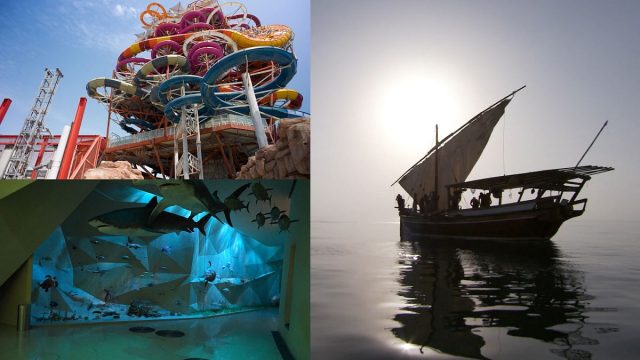See how the element of water continues to shape Qatari society through tourism, marine conservation and shipbuilding.
Most citizens and residents leave for cooler climates during the summer months. However, there is no better way to cool off for those left behind than to take to the water, and the Qatar 365 team did just that. First, Aadel Haleem visited the country’s newest and largest water park, Meryal, and discovered that it was designed in honor of Qatar’s oil and gas industry. The park has created a sensation in the region for its thrilling attractions and unique concept. Intentionally rusty structures, attractions with outlandish names and the water park’s mascot, simply called “Oily”, mark the turning point in Qatar’s economic history.
Laila Humairah ventured into calmer waters and discovered Qatar’s extraordinary marine fauna. Laila met with Jassim Lari, who heads the Department of Marine Fauna at the Ministry of Environment and Climate Change. Driven by his passion for nature, Jassim is on a mission to preserve Qatar’s biodiversity. From whale sharks to turtles and mangroves, the Government has launched several initiatives to ensure these species continue to thrive for decades to come.
Lastly, Laila met with Ahmed Jassim Alsayegh and got an exclusive look at how traditional dhows are made. Ships are a fundamental part of Qatar’s maritime history. Thanks to these wooden ships, Qatar discovered its rich pearl heritage and lucrative trade routes. Ahmed has been designing dhows for 30 years and over time has incorporated the use of modern tools to build the dhow boats in a traditional way. Ahmed makes sure to transmit the ancient shipbuilding methods in manuscripts and plans so that younger architects can learn the technique and thus pass it on.







